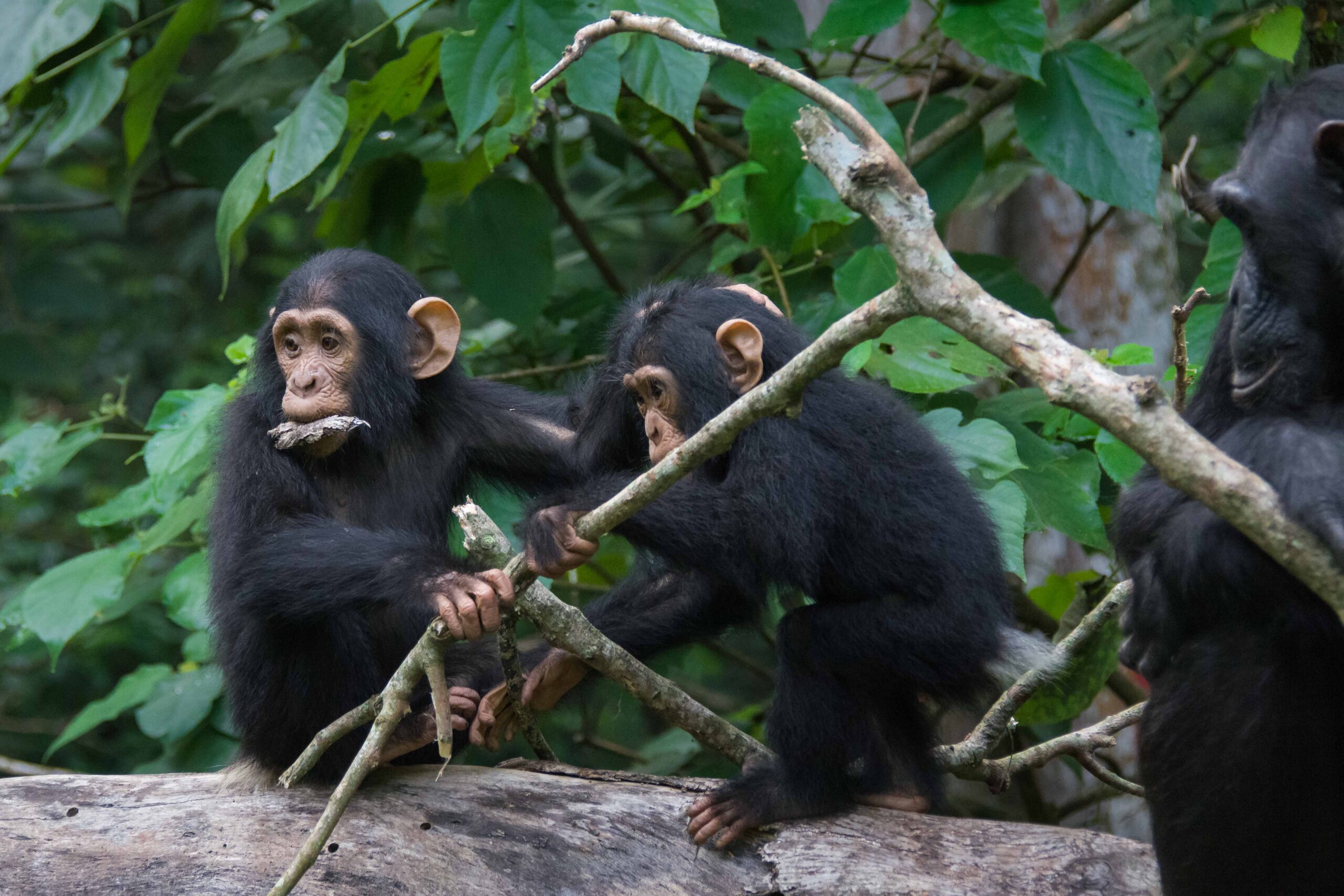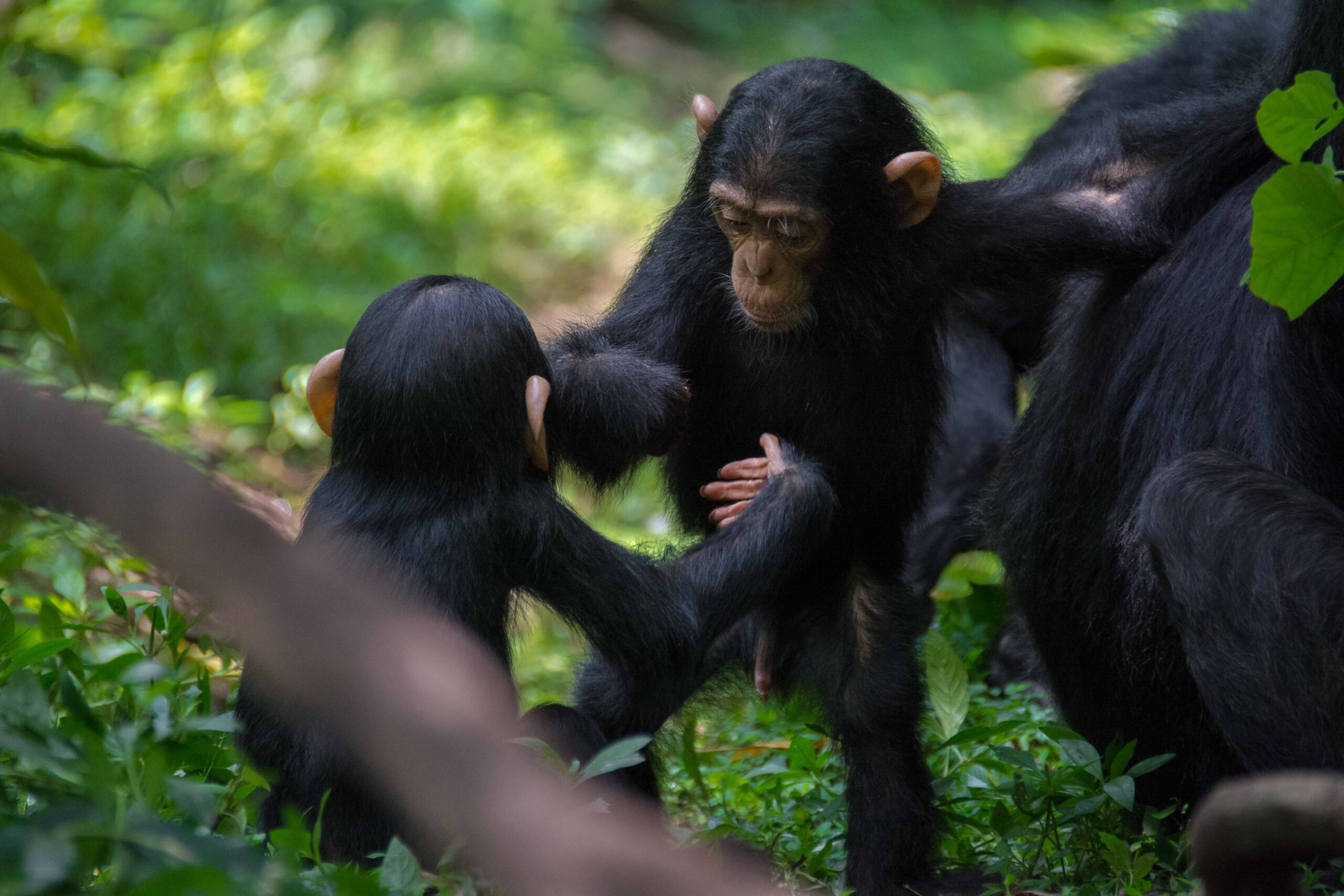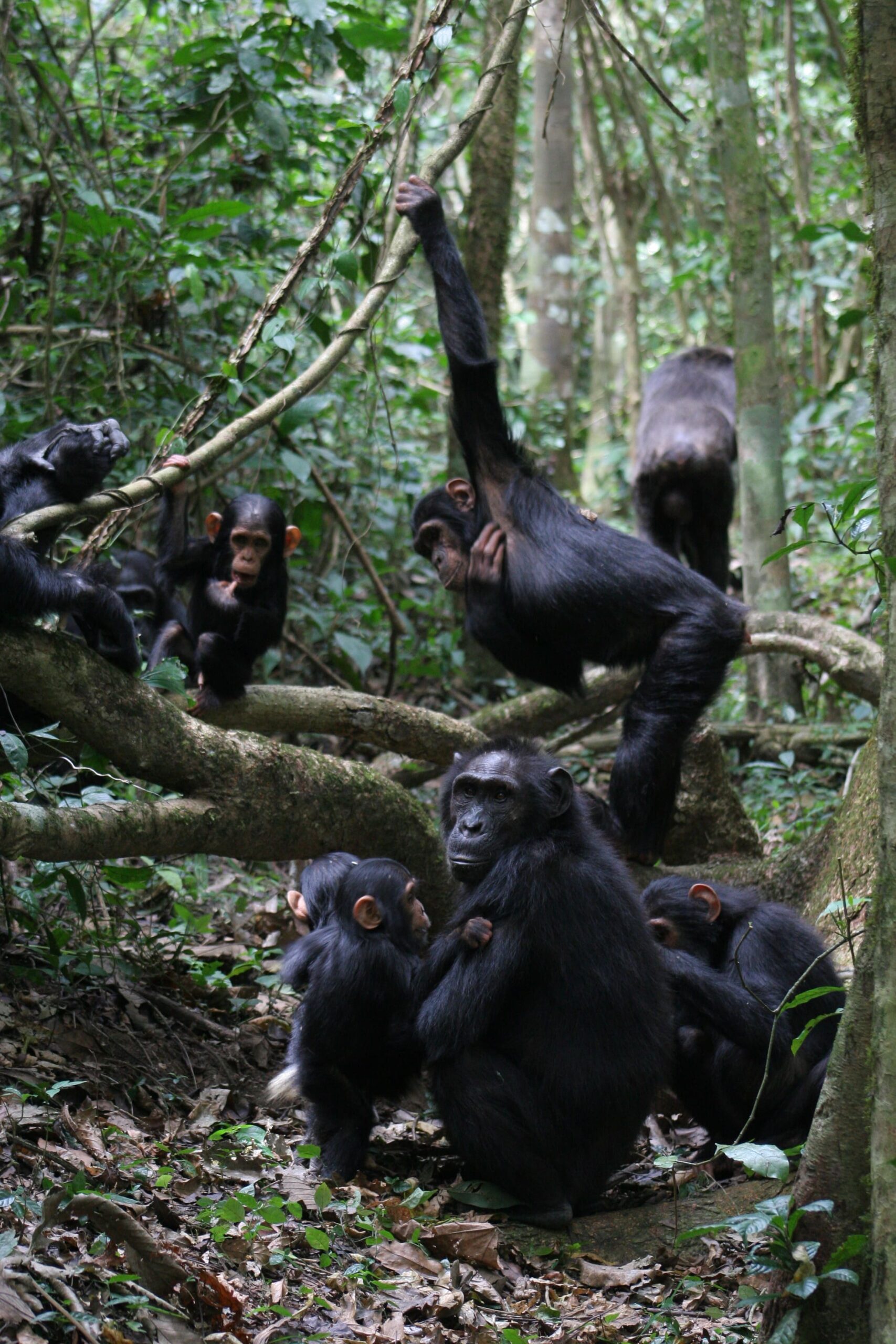
Wild chimpanzees share humans' snappy conversational style, a new study shows.
Researchers from the University of St Andrews and an international group of colleagues used the largest-ever database of wild chimpanzee gestural communication to show that chimpanzees' gestures and human languages share the same conversational structures.
They've published their findings in the journal Current Biology.
Fast-paced conversation
One of the hallmarks of human conservation is fast-paced turn-taking.
Humans typically leave just 200 milliseconds between the end of one speaker's sentence and the other's response.
These conversation 'gaps' are so short that we don't have the time to mentally process the last word someone said before we start to respond.
Professor Cat Hobaiter, a primatologist from the School of Psychology and Neuroscience at St Andrews, said: "It's amazing to see how close the chimpanzee and human timings were-and that, just like us, the chimpanzee sometimes even interrupted each other midway through a gesture.
"The chimps had a bigger range in timings: the gaps ranged from interrupting the signaller 1600 milliseconds before they finished their gesture, to taking 8600 milliseconds to respond.
"This could be because the chimps were in a natural setting, unlike the humans who were observed and so could express a wider range of behaviour – sometimes interrupting each other and other times taking a long time to respond.
Evolution of language
Conversation structure is a human universal, but it also shows cultural variation. Around the world, conversations in different languages show similar time intervals between conversation turns.
In some languages, these conversation 'gaps' are shorter or longer.
Research from The Max Planck Institute for Psycholinguistics shows that the average time for Japanese speakers was seven milliseconds while Danish speakers took 470 milliseconds to intervene.
The universal nature of this conversation structure suggests this key aspect of language use evolved long ago and before language as we know it emerged. But it was an open question whether it was shared in other species.

Lead researcher Dr Gal Badihi from the School of Biology at St Andrews says:"We still don't know when these human conversational timing patterns evolved and for what reason.
"Looking into more distantly related species will be a great way to better understand when and why these conversational rules evolved."
Badihi says simply understanding more about chimpanzees and their interactions is interesting in itself.
"It's fascinating to witness how chimpanzees interact with each other and the world. Their societies are quite similar to ours – they spend time in large groups, break up into smaller parties and then come back together.
"Communication helps chimpanzees avoid conflict and coordinate with each other. Their gestures allow them to communicate over short distances to achieve social goals in the moment.
"So one chimpanzee could gesture to another that they want food, and the other might give them food or, if they feel less generous, respond by gesturing for them to go away. They might come to an agreement about how or where to groom. It's fascinating, and done in just a few short gesture exchanges."
"This is quite different to how humans normally use conversations: to exchange ideas about the world without making specific requests from their conversation partner"

Understanding chimpanzees' conversations
The researchers spent decades recording the behaviour of five communities of wild East African chimpanzees in rainforests and woodlands in Uganda and Tanzania.
They collected over 8500 gestures from over 250 individuals to create the largest-ever database of chimpanzee gestures.
As well as establishing that the timing of chimpanzee gestural exchanges are very similar to those in human languages, the researchers also discovered that the chimpanzees show small variations between communities.
Professor Cat Hobaiter said: "We're still trying to work out why but the Sonso chimpanzees in the Budongo Forest Uganda seem to be the slow 'talkers' taking their time to reply, while just down the road the Kanyawara chimpanzees are speedier!"
The teams hope to look at this in other apes and species.
They hope to work out why these gestural 'conversations' exist, for example, whether they are clarifications or even negotiations between the chimpanzees.
Funding
The research was funded by European Research Council, the Russell Trust Award from University of St Andrews, the Swiss National Science Foundation, the Royal Zoological Society of Scotland, UCSD and Salk Centre for Academic Research and Training in Anthropogeny (CARTA), and the Department of Human Origins, Max Planck Institute for Evolutionary Anthropology.
Research was conducted in and supported by five field stations: the Budongo Conservation Field Station, the Greater Mahale Ecosystem Research and Conservation field station, the Kibale Chimpanzee Project, and the Kalinzue field station.
Category Research






